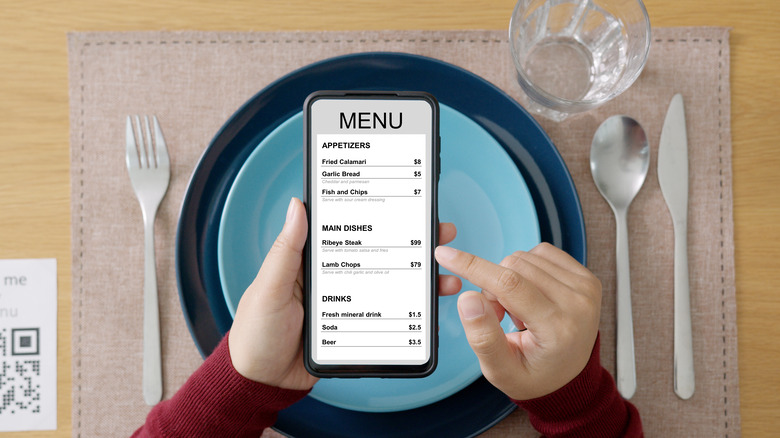Restaurants Are Using Barbell Pricing To Counter The Weight Of Inflation
Inflation has emerged as something of a gross and dangerous nuisance in recent months. It's an eyebrow piercing that just won't heal. It's a backpack that U.S. consumers are exhaustedly dropping and putting on again every few weeks. In September, the United Nations' Food Price Index reported that even though food prices fell for the fifth consecutive month in a row, they were still 7.9% higher overall than in September 2021 — and home cooks are feeling the heat. In a Tasting Table Exclusive Survey, nearly 75% of readers said food inflation will change the way they buy groceries, opting for private-label food brands they normally wouldn't choose. Even high-income shoppers are shifting their habits: According to consumer trends tracker Dunnhumby, 73% of U.S. households whose annual incomes top $100,000 say they prioritize grocery stores with low prices.
Consumers' restaurant-related habits are similarly changing in response to inflation. In August, Dine Brands (the company that owns both Applebee's and IHOP) saw a 6-8% uptick in traffic last quarter from customers with an annual income exceeding $75,000, via Insider. But, as high-income customers start opting for value restaurants, price hikes are driving low-income customers away altogether. "We assume that they've left us for lower-cost options," remarked Dine Brands CEO John Peyton. It's a mass industry shift down the economic ladder. Now, restaurants are reworking their pricing strategies to cater to customers on both ends of the drastically widening spectrum. Introducing, barbell pricing: the latest way restaurants are trying to counter inflation.
Pushing luxury and value meals at the same time
In "barbell pricing," explains Restaurant Business, restaurants promote both the highest- and the lowest-priced offerings on their menus. Instead of heavy discounts, restaurants are offering affordable promotions alongside pricier options. This strategy aims to counter the weight of inflation by keeping profit margins even, ideally locked around a stable, happy medium. (It turns out, catering to economic disparity is a successful business strategy.)
At Red Robin, for instance, guests can buy a $10 Gourmet Meal Deal or spend $15.99 on two limited-edition Cheese Lovers burgers. Chili's has been doing away with some of its bigger discounts, but the barbell pricing strategy has been driving up sales, says CFO Joe Taylor. A "3 for Me" value meal runs for $10.99, and a full-price sirloin steak is $15.99 – not a far cry from one price tag to another. Even though foot traffic is down, Taylor says, profits are up.
The success of barbell pricing in restaurants is particularly interesting considering that food inflation has lowered total food sales in grocery stores. Per Food Business News, people are buying less food, and it isn't just impulse purchases getting cut. Due to steep prices, U.S. consumers are passing up staples like dairy and bread. But, in restaurants, the consumer attitude around food spending seems to be a different story. As former Red Robin CEO Paul Murphy put it, "How do [customers] want to spend whatever discretionary income they have?"

